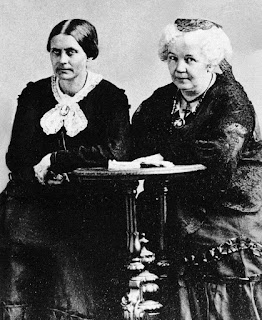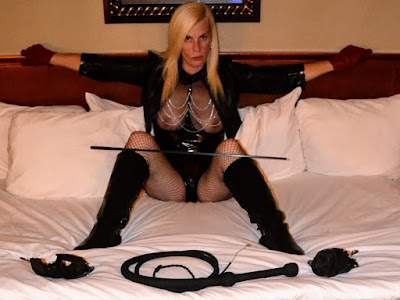HERSTORY - A Timeline of Major Moments in American History - by TJ Leone
1636
Anne Hutchinson, who has challenged the teachings of the leaders of the Massachusetts Bay Colony, is tried for heresy and banished. She and her family move to Rhode Island.
1692
In an outbreak of hysteria in and around Salem, Mass., hundreds of people, mostly women, are accused of witchcraft. Nineteen are put to death.
1701
The first sexually integrated jury hears cases in Albany, New York.
1773
As an adjunct to the Sons of Liberty, women form the Daughters of Liberty.
1777
All states pass laws which take away women’s right to vote.
1834
The Factory Girls Association stages a strike at the mills in Lowell, Mass.
1837
Mary Lyon founds Mount Holyoke College for women.
1837
Oberlin becomes the first co-educational college in the United States.
A national convention of female anti-slavery societies meets in New York.
1840
Elizabeth Cady Stanton attends the World Anti-Slavery Convention in London and is turned away by male organizers.
1845
Sarah Bagley establishes the Female Labor Reform Association in Lowell, Mass.
1850
The Female Medical College of Pennsylvania is founded.
1854
Elizabeth Cady Stanton and Susan B. Anthony present a petition with 10,000 signatures demanding suffrage and married women’s property rights to the New York legislature.
1861
Two weeks after the onset of war, women found 20,000 aid societies throughout the country. In the north, they are coordinated by the Sanitation Commission. By the end of the war, women have raised $15 million worth of supplies.
1863
The Women’s National Loyal League is founded to encourage a constitutional amendment abolishing slavery and granting women’s suffrage.
1869
Stanton and Anthony, leading the National Woman Suffrage Association, oppose ratification of the 15th Amendment because it omits any mention of voting rights for women. The alliance between feminists and abolitionists disintegrates.
Lucy Stone and Henry Blackwell found the American Woman Suffrage Association in support of the 15th Amendment.
1879
Through special Congressional legislation, Belva Lockwood becomes first woman admitted to try a case before the Supreme Court.
1890
Florence Kelley founds the National Consumers’ League in an effort to harness women’s purchasing power in order to demand better labor conditions.
1896
The National Association of Colored Women is formed.
1910
Washington state grants women the right to vote.
1911
California grants women the right to vote.
1912
Kansas, Oregon, and Arizona grant women the right to vote.
1916
Suffragettes demonstrate at the Republican and Democratic national conventions.
1920
The 19th Amendment, guaranteeing women the right to vote, is ratified.
NAWSA becomes the League of Women Voters.
1921
The first Miss America Beauty Pageant is held in Atlantic City.
1932
Frances Perkins becomes the first female in the Cabinet when she is appointed Secretary of Labor.
1937
During a sit-down strike at a General Motors plant, the Women’s Emergency Brigade organizes a continuous delivery of supplies that makes the strike possible.
1941
During World War II, women’s participation in the workforce increases by nearly 60%.
1942
The military creates women’s branches in each of the armed services. Close to 350,000 women serve in the WAVES (Navy), WACS (Army), SPARS (Coast Guard), MCWR (Marines), and WASP (Air Force).
1945
Women are forced to retreat from the labor pool. In the auto industry the proportion of women on the assembly lines falls from 25% to 7.5%.
1955
When Rosa Parks is arrested for refusing to give up her seat on a bus, Joanne Robinson, president of the Local Women’s Political Council, organizes the bus boycott in Montgomery, Alabama.
1957
Daisy Bates, president of the Little Rock, Arkansas NAACP, wins a suit to integrate Little Rock High School.
1963
Congress passes the Equal Pay Act in an attempt to eliminate the practice of paying women less for the same work performed by men.
1964
The National Woman’s Party encourages the amendment of Title VII to prohibit employment discrimination on the basis of sex. The amendment is successful.
1966
Friedan joins with other feminists and creates the National Organization for Women (NOW).
1973
The Supreme Court establishes a woman’s right to legal abortion in Roe v. Wade.
1974
The Coalition of Labor Union Women is formed.
1981
Sandra Day O’ Connor is sworn in as the first female Supreme Court justice.
1984
Geraldine Ferraro is nominated as a major party’s first female vice-presidential candidate.
1989
In Webster v. Reproductive Health Services, the Supreme Court limits abortion rights, but stops short of overturning its decision in Roe v. Wade.
1990
Underground punk feminist movement, Riot grrrl is founded in Washington State.
1993
President Clinton appoints Ruth Bader Ginsburg, a feminist activist and former attorney for the ACLU, to the Supreme Court.
President Clinton signs the Family and Medical Leave Act.
1996
Madeleine Albright is appointed the first female Secretary of State.
1998
Time magazine asks, “Is Feminism Dead?” The cover photo features Susan B. Anthony, Betty Friedan, Gloria Steinem, and television character Ally McBeal.
2000
CBS Broadcasting agrees to pay $8 million to settle a sex discrimination lawsuit by the E.E.O.C. on behalf of 200 women.








Comments
Post a Comment